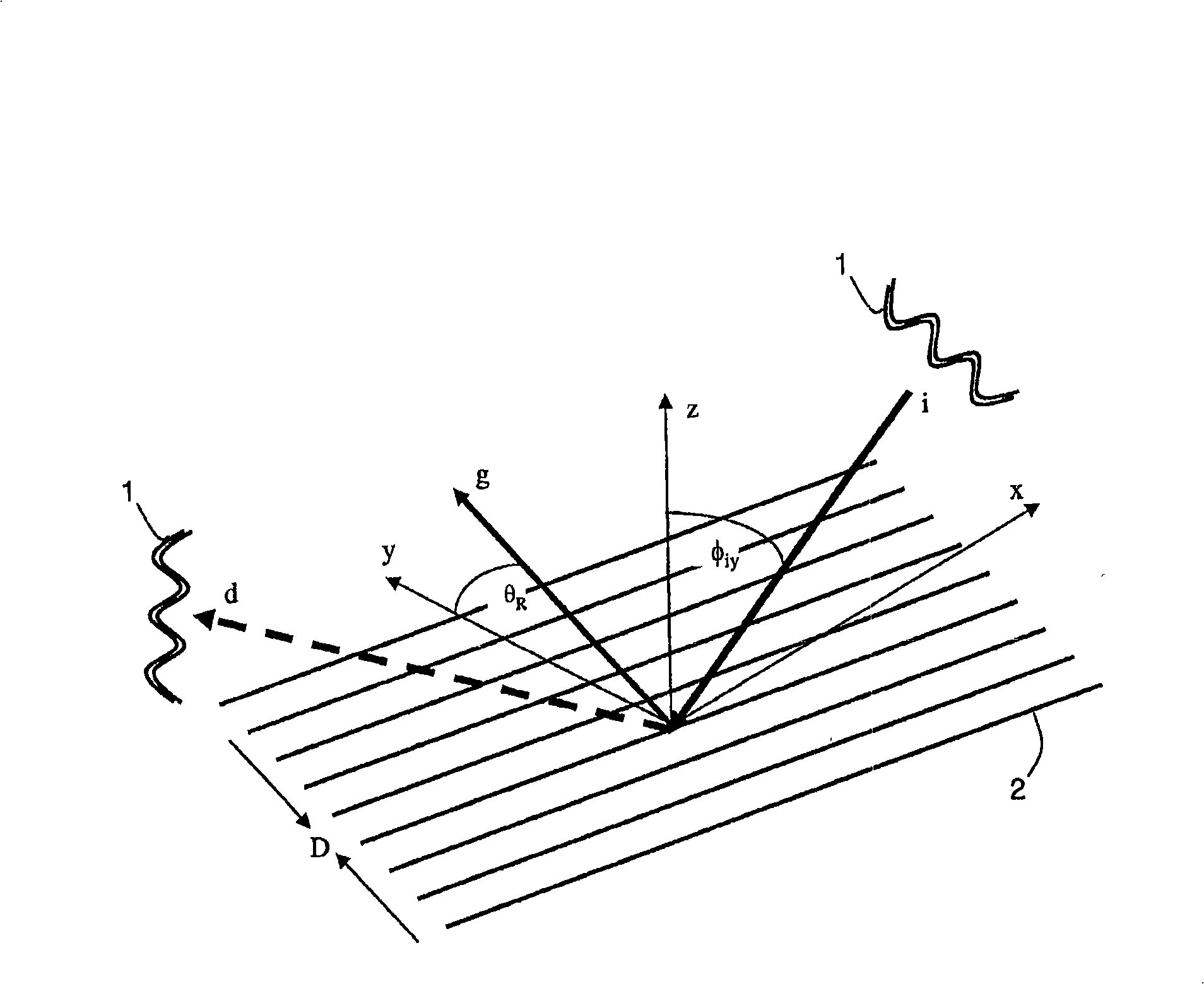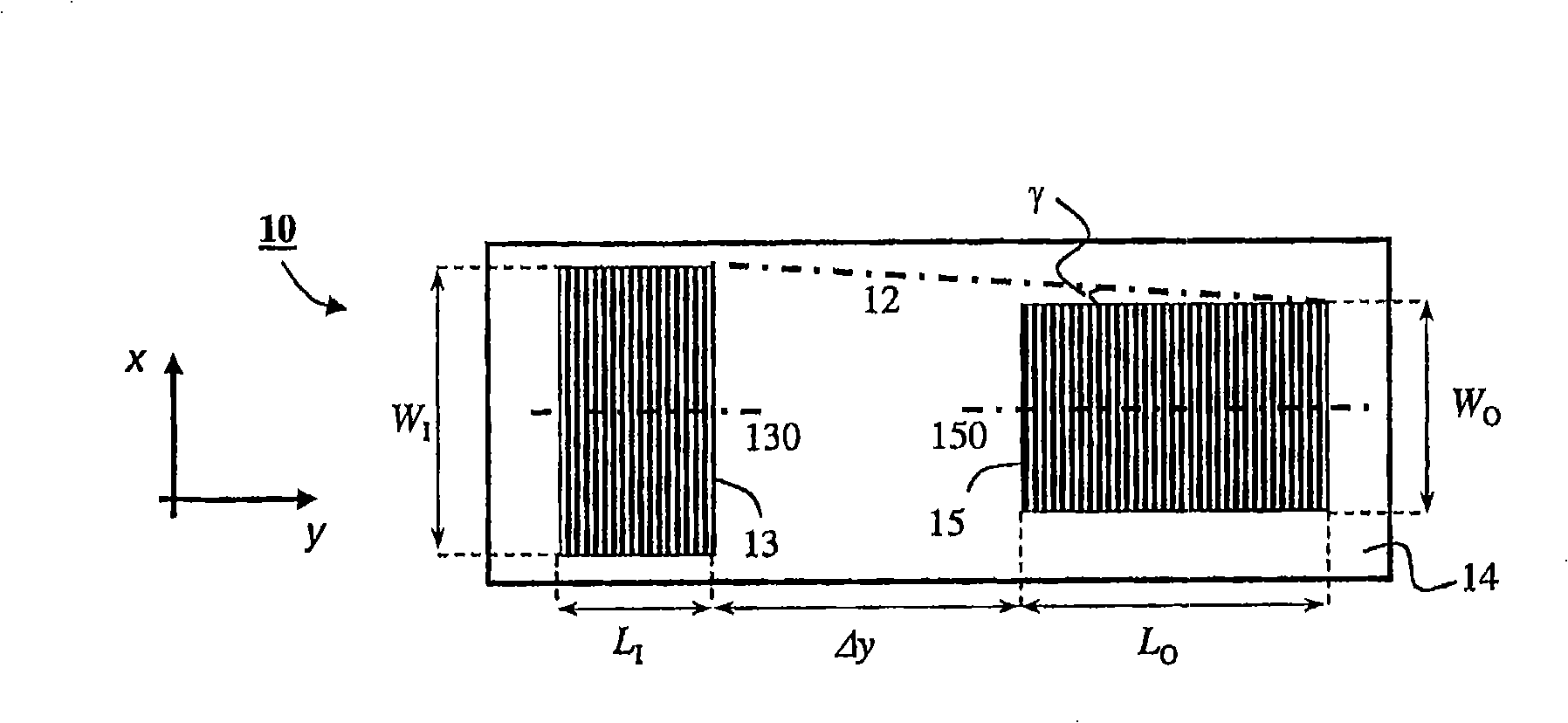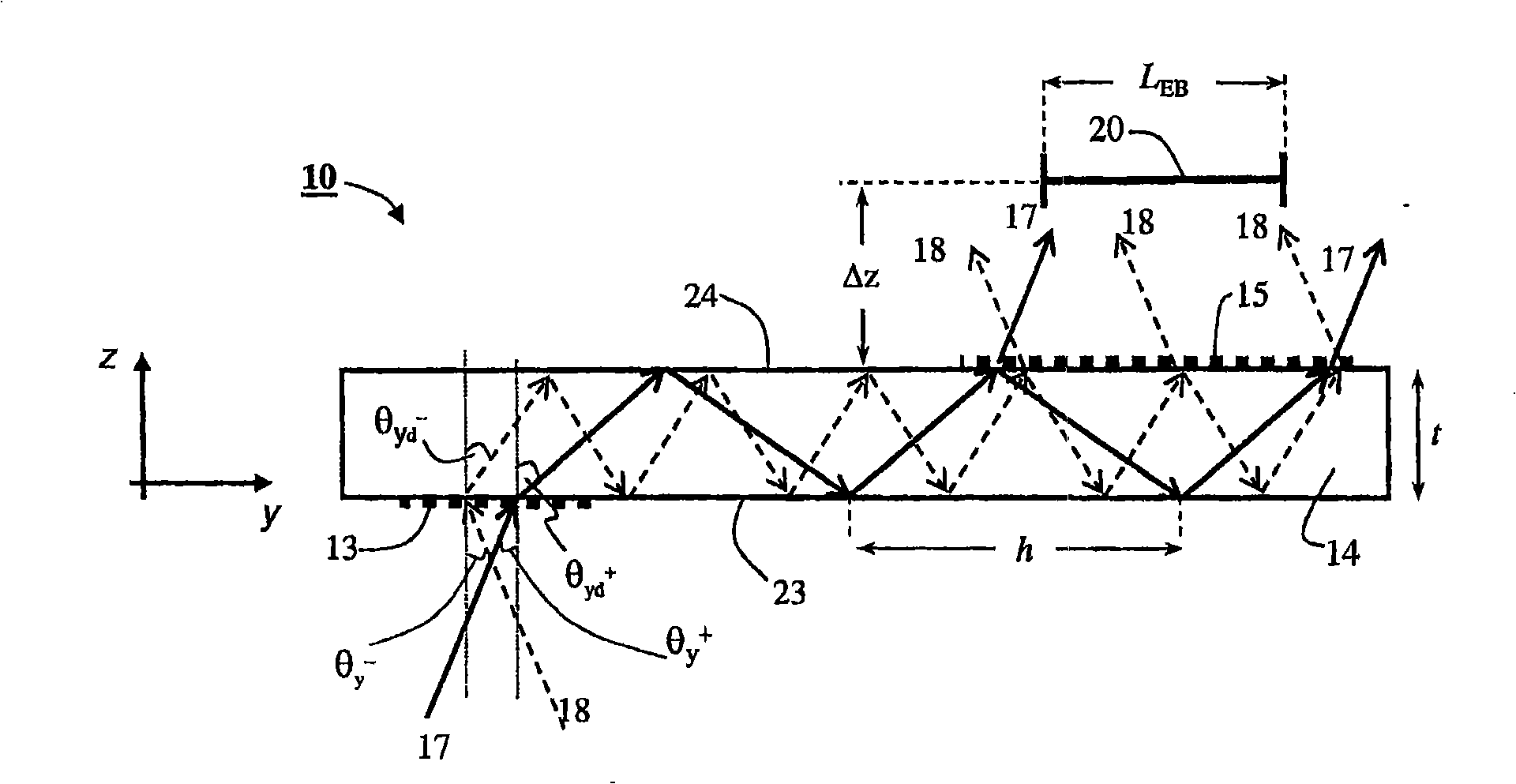Diffractive optical device and system
A technology of diffractive optical elements and optical elements, applied in the field of optical elements, can solve problems such as limited field of view
- Summary
- Abstract
- Description
- Claims
- Application Information
AI Technical Summary
Problems solved by technology
Method used
Image
Examples
example 1
[0251] Diffraction of red light
[0252] In the following non-limiting example, planar size calculations are performed for the diffraction of red light in accordance with the teachings of the preferred embodiments of the present invention.
[0253] These calculations are for a grating with a period of 509 nm formed in a light-transmitting substrate with a refractive index of 1.522 and a thickness of 2 mm. For a representative example of red light, a wavelength of 615 nm is chosen.
[0254] Using the above values for grating period, refractive index and wavelength, a longitudinal field of view Ω of [-12.0°, +12.0°] can be obtained y And [-9.0°, +9.0°] lateral field of view Ω x . The total (diagonal) field of view Ω is calculated using Equation 5 to obtain Ω = [-15°, +15°].
[0255] For Δz = 25mm, the minimum size of the output optic (see Equation 6) is L O,min =10.6mm and W O,min =7.9mm. for L EB = 4mm, W EB = 1mm and O p = 3mm, the size of the output optics (see eq...
example 2
[0260] Diffraction of blue light
[0261] In the following non-limiting example, planar size calculations are performed for the diffraction of blue light in accordance with the teachings of the preferred embodiments of the present invention.
[0262] These calculations are for a grating with a period of 389 nm formed in a light-transmitting substrate with a refractive index of 1.529 and a thickness of 1.8 mm. For a representative example of blue light, a wavelength of 465 nm is chosen.
[0263] Using the above values for grating period, refractive index and wavelength, a longitudinal field of view Ω of [-11°, +11°] can be obtained y and [-8.3°, +8.3°] lateral field of view Ω x . The total (diagonal) field of view Ω was calculated using Equation 5 to obtain Ω = [-13.7°, +13.7°].
[0264] For Δz = 20mm, the minimum dimension of the output optics is L O,min =7.8mm and W O,min = 5.8 mm. for L EB =5mm,W EB = 2mm and O p = 3mm, the size of the output optics is L O =15.8...
example 3
[0269] non-uniform duty cycle
[0270] Figure 11a -d shows the numerical calculation of the diffraction efficiency of the grating as a function of the duty cycle: impact angle φ iy is 50°( Figure 11a -b) and 55°( Figure 11c -d), and the modulation depth δ is 150nm ( Figure 11a and 11c ) and 300nm ( Figure 11b and 11d ). Figure 11a The different curves in -d correspond to wavelengths of 480 nm (solid line), 540 nm (dashed line) and 600 nm (dot-dash line). These calculations are based on Maxwell's equations for a grating of 455 nm period formed in a light-transmissive substrate with a refractive index of 1.53.
PUM
| Property | Measurement | Unit |
|---|---|---|
| Width | aaaaa | aaaaa |
| Length | aaaaa | aaaaa |
| Thickness | aaaaa | aaaaa |
Abstract
Description
Claims
Application Information
 Login to View More
Login to View More - R&D
- Intellectual Property
- Life Sciences
- Materials
- Tech Scout
- Unparalleled Data Quality
- Higher Quality Content
- 60% Fewer Hallucinations
Browse by: Latest US Patents, China's latest patents, Technical Efficacy Thesaurus, Application Domain, Technology Topic, Popular Technical Reports.
© 2025 PatSnap. All rights reserved.Legal|Privacy policy|Modern Slavery Act Transparency Statement|Sitemap|About US| Contact US: help@patsnap.com



